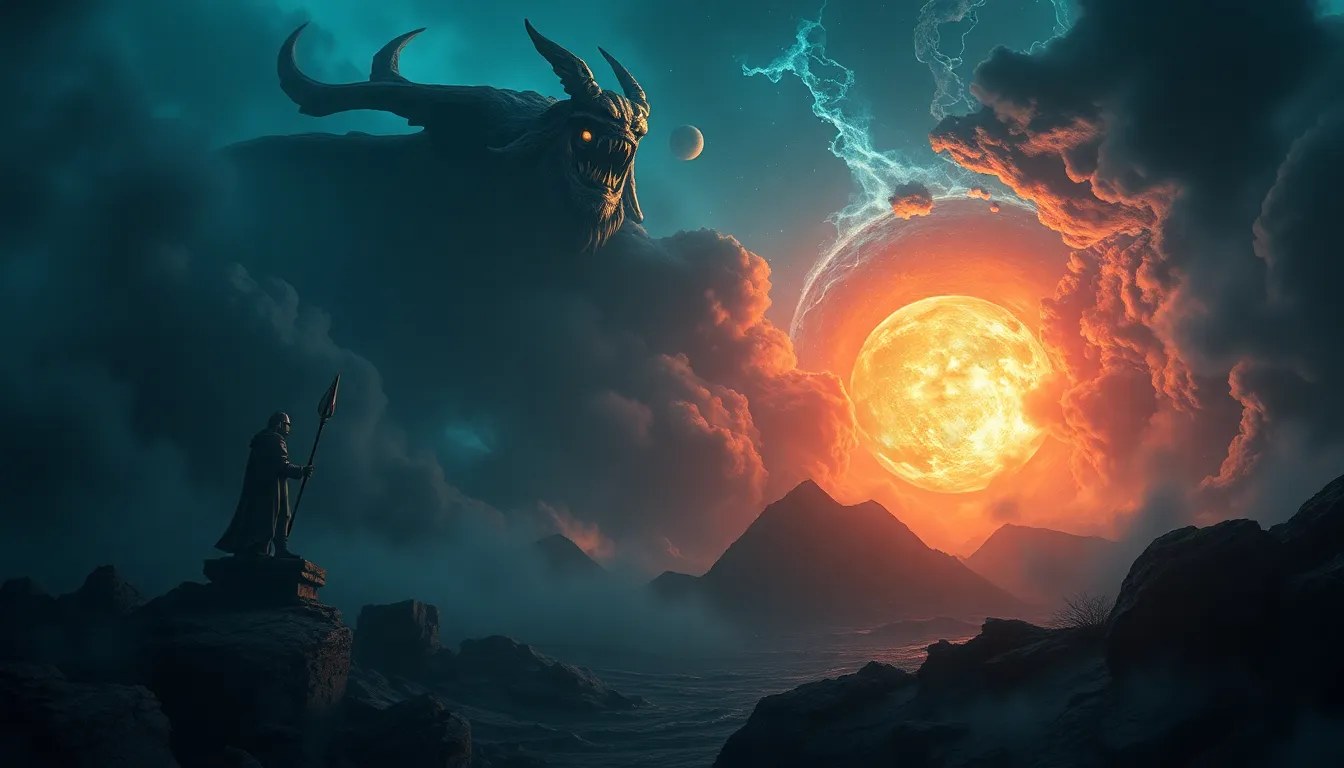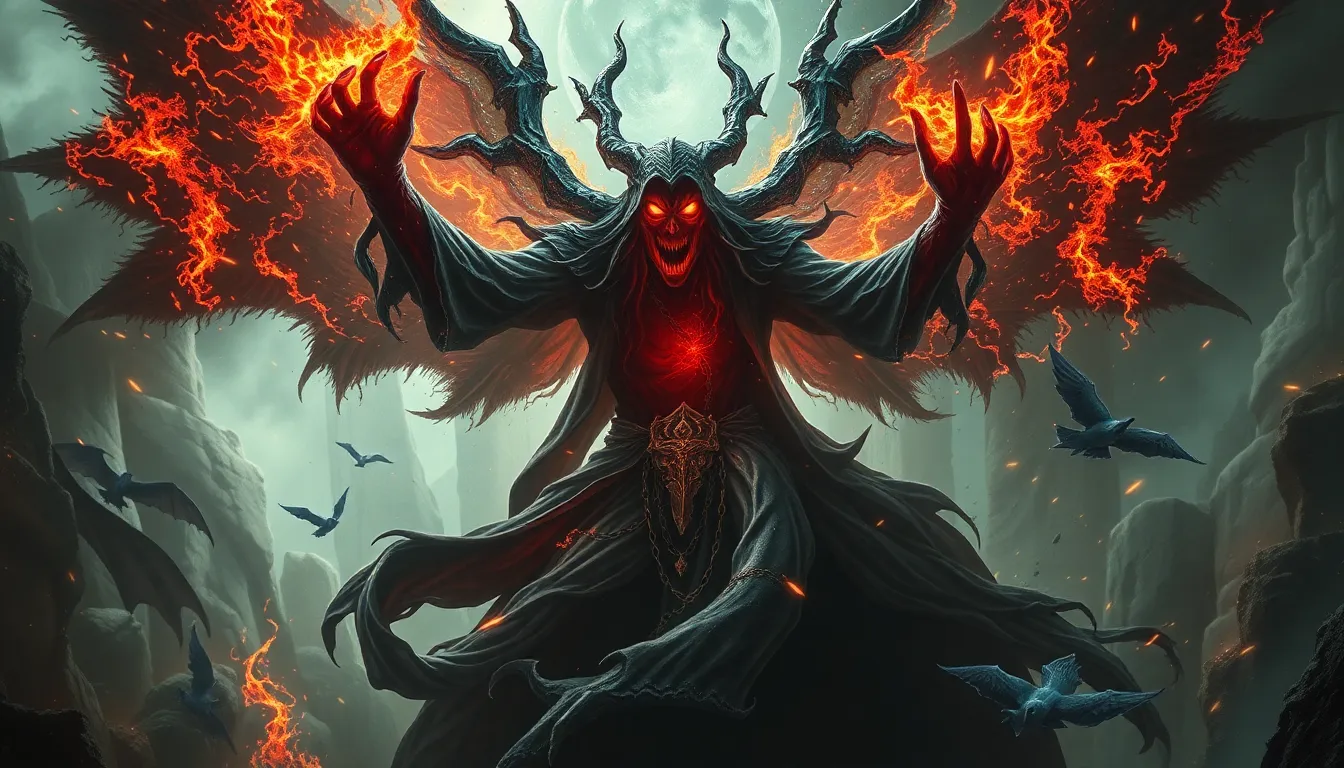The Deathless and the Environment: Koschei’s Relationship to Nature in Slavic Mythology
I. Introduction
Koschei the Deathless is a prominent figure in Slavic mythology, often depicted as a powerful sorcerer and an antagonist in various folklore tales. His character embodies the themes of immortality and the struggle between life and death. In Slavic folklore, nature plays a significant role, acting as both a backdrop for stories and a character in its own right. This article aims to explore the intricate relationship between Koschei and the environment, shedding light on how this mythological figure interacts with and symbolizes the natural world.
II. The Mythical Figure of Koschei
A. Origins and characteristics of Koschei
Koschei’s origins can be traced back to ancient Slavic beliefs, where he is often portrayed as a skeletal figure or an old man with supernatural powers. His most defining characteristic is his deathlessness, which is often linked to a hidden object that contains his soul, typically an enchanted needle or egg. This unique attribute makes him nearly invulnerable, as he can only be defeated by discovering and destroying this object.
B. The symbolism of immortality and deathlessness
Koschei’s immortality symbolizes the human fascination with death and the desire to transcend mortality. His character serves as a reminder of the inevitable cycle of life and death, highlighting the conflict between the natural order and the desire for eternal life. This theme resonates deeply within Slavic narratives, where Koschei often represents the dark side of nature.
C. Koschei’s role in Slavic tales and its impact on cultural narratives
Koschei frequently appears as an antagonist, challenging heroes and heroines in their quests. His presence introduces conflict and tension within these stories, often leading to moral lessons about courage, sacrifice, and the importance of respecting nature. Koschei’s character has significantly influenced the cultural narratives of Slavic peoples, serving as a cautionary figure who embodies the consequences of disrupting the balance of life and death.
III. Nature in Slavic Mythology
A. The portrayal of nature as a living entity
In Slavic mythology, nature is often depicted as a sentient being, imbued with spirits and deities that govern various aspects of the natural world. Forests, rivers, and mountains are not merely settings for stories; they are integral characters that interact with humans and other mythological figures. This portrayal emphasizes the interconnectedness of all living things.
B. Elements of the natural world in Slavic folklore
- Forests: Often seen as mystical places inhabited by spirits and creatures.
- Rivers: Symbolizing the passage of time and the flow of life.
- Mountains: Representing strength and stability, often housing gods and mythical beings.
C. The duality of nature: nurturing and destructive forces
Slavic folklore presents nature as a dual force, capable of nurturing life and unleashing destruction. This duality is evident in various myths where nature assists heroes or becomes a malevolent force when disrespected. Koschei embodies this duality, as his actions can lead to both creation and destruction within the natural world.
IV. Koschei’s Domain: The Interplay of Life and Death
A. Koschei’s connection to the underworld and natural cycles
Koschei’s ties to the underworld reflect the natural cycles of life and death. His deathlessness is juxtaposed with the inevitable decay and rebirth found in nature. This connection highlights the importance of understanding these cycles and respecting the balance of life.
B. The role of forests, rivers, and mountains in his mythos
Forests often serve as the setting for Koschei’s confrontations with heroes, representing the unknown and the dangers that lurk within nature. Rivers can symbolize the boundaries between life and death, while mountains may signify the challenges one must overcome to achieve victory over Koschei. Each element of nature in his stories contributes to the overarching themes of struggle and resilience.
C. How Koschei embodies the tension between life and death in nature
Koschei’s character is a manifestation of the tension between creation and destruction. He is both a guardian of the natural order and a disruptor of life, illustrating the complexity of existence. His narratives encourage a deeper understanding of the cycles inherent in nature and the consequences of imbalance.
V. Environmental Themes in Koschei’s Stories
A. The significance of natural landscapes in Koschei’s narratives
Natural landscapes play a crucial role in Koschei’s tales, often reflecting his internal struggles and the broader themes of the narrative. The depiction of lush forests or desolate wastelands can indicate the state of balance or imbalance in the world, mirroring Koschei’s actions and their consequences.
B. Nature as a reflection of Koschei’s internal struggle
The natural world often reflects Koschei’s internal turmoil. As he grapples with his immortality and the desire for power, the environment around him reacts, showcasing the impact of his choices. This connection emphasizes the idea that individual actions can have far-reaching effects on the world.
C. Lessons about humanity’s relationship to the environment
Koschei’s stories impart valuable lessons about humanity’s relationship with nature. They urge respect for the natural world and caution against the pursuit of power at the expense of ecological balance. The narratives serve as a reminder that the well-being of the environment is intrinsically linked to the health of humanity.
VI. Koschei and the Guardianship of Nature
A. The role of Koschei as a protector or destroyer of the natural world
Koschei occupies a complex position as both a protector and destroyer of nature. His deathlessness allows him to witness the cycles of life, but his actions can lead to chaos and destruction. This duality highlights the responsibility that comes with power and the importance of stewardship over the environment.
B. Myths that illustrate his influence over natural elements
Various myths depict Koschei wielding control over natural elements, showcasing his ability to summon storms or manipulate the landscape. These stories illustrate the profound impact that one figure can have on the environment, reinforcing the idea that individual actions matter.
C. The implications of his actions for ecological balance
Koschei’s narratives often serve as cautionary tales about the consequences of disrupting ecological balance. His destructive tendencies remind us of the fragility of nature and the importance of maintaining harmony within the ecosystem.
VII. Modern Interpretations of Koschei and Nature
A. How contemporary literature and art reinterpret Koschei’s relationship with the environment
In contemporary literature and art, Koschei’s character has been reimagined to reflect modern ecological concerns. Artists and writers explore themes of environmental degradation and the need for ecological stewardship, using Koschei as a symbol of both the dangers of exploitation and the potential for renewal.
B. The relevance of Koschei’s myth in today’s ecological discussions
Koschei’s myth remains relevant in today’s discussions on ecology and environmentalism. His story serves as a metaphor for the consequences of humanity’s actions on the natural world, urging a return to respect and reverence for nature.
C. Lessons from Slavic mythology for modern environmentalism
Slavic mythology, through figures like Koschei, offers valuable lessons for modern environmentalism. It emphasizes the interconnectedness of life, the importance of balance, and the need to respect the natural world. These lessons can guide contemporary efforts to address ecological issues and promote sustainability.
VIII. Conclusion
Koschei the Deathless is a significant figure in Slavic mythology, embodying the complex relationship between humans and nature. His stories reflect themes of immortality, the duality of nature, and the consequences of disrupting ecological balance. Understanding Koschei’s legacy provides insight into the importance of respecting the environment and recognizing the interconnectedness of all life. As we navigate modern ecological challenges, the lessons from Slavic mythology remain pertinent, reminding us of the enduring significance of mythological figures in shaping our understanding of nature.



